Boundaries and Imaginaries
Processes by which minorities are pushed to the margins of society
STEREOTYPING ROMA: ROMA AS CRIMINALS IN EUROPEAN IMAGINARY
Roma are the most discriminated against and impoverished (Sardelić 2019) minority in Europe. This reality stands in stark contrast to the way Dijana Pavlovic describes Romani people in a speech at Bocconi University: ‘There are 12 million Roma in Europe, in every European country. We speak every European language, we have all religions, we are peaceful, we have never gone to war, never had territorial requests. So in some sense, we Roma represent what Europe itself claims it wants to be. Differences, coexisting cultures, which feel they are one identity’ (2019: 9:15-51). The Romani minority in Europe continues to be treated differently. As an Alliance Against Antigypsyism (2016) reference paper explains, Roma are still treated as aliens in Europe even though they arrived on the continent centuries ago. The process of othering they face is linked to the fact that the Roma were slaves in the area of present-day Romania until the 19th century. The racism Roma face can be compared to that of African-American descendants of slaves in the USA (Goldston 2017); they have inherited a history of deprivation, poverty and being considered ‘less than human’ (Alliance Against Antigypsyism 2016: 7). As this post and the next explain, anti-Roma discrimination is a practice founded on damaging stereotypes of Romani people that exist in the European collective imagination.
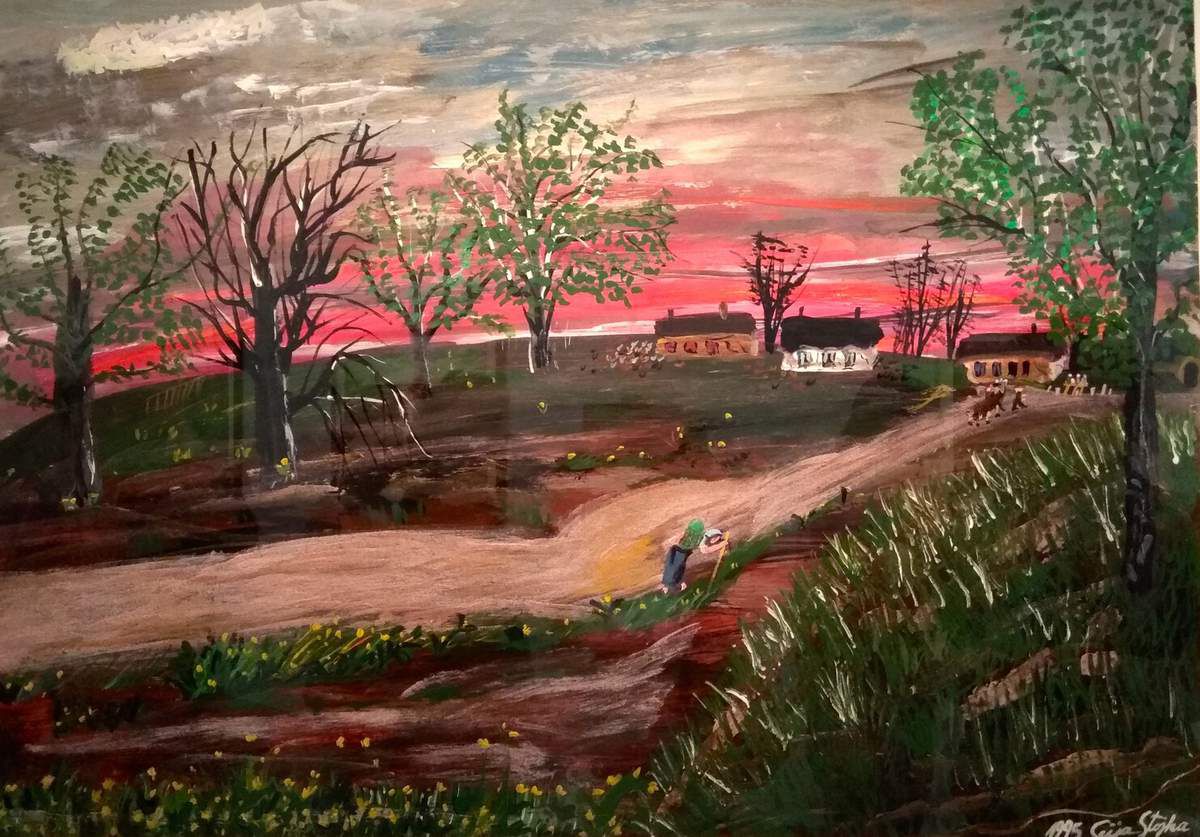
One of these stereotypes is the labelling of Roma as criminals (Vidra & Fox 2014, Kóczé & Rövid 2017) which impacts how Roma are treated by the police (often being the obvious suspects) and believed to be untrustworthy by their neighbours. A shocking example of police violence towards Roma can be found in this visual representation of instances where Romani individuals have been killed or mistreated as a result of encounters with various police forces across Europe. The French philosopher, Michel Foucault, explains in a lecture he gave in 1976 how racist trends in society are established through the construction of certain subjects as threats from which society must defend itself: ‘We are therefore at war with one another; a battlefront runs through the whole of society’ (Foucault 2003: 51). Imagining the Roma as criminals enables the rest of society to treat them differently, to “wage war” on them through discriminatory practices.
The discourse of “gypsy-crime” is a tool used by the media and some political parties to sensationalise the crimes that are committed by Roma to consolidate their image as criminals in the minds of non-Roma society. Even when there is no crime, the way the media reacts to events in portraying Romani individuals reproduces and plays on existing stereotypes. This is the case for two separate instances (one in Greece in 2013 and another a few weeks later in Ireland) of blonde-haired, blue-eyed children being found with different-looking Roma parents (Kóczé & Rövid 2017). On both occasions, the media jumped on the possibility of child-theft and emphasised the “whiteness” of the children, making it inconceivable that they could be the legitimate children of the Romani parents. This is just one example of how a discourse of threat and negative stereotyping affects society, both for those whose thoughts and actions are influenced by them as well as the marginalised who have to live with the consequences.
The discourse of “gypsy-crime” is a tool used by the media and some political parties to sensationalise the crimes that are committed by Roma to consolidate their image as criminals in the minds of non-Roma society. Even when there is no crime, the way the media reacts to events in portraying Romani individuals reproduces and plays on existing stereotypes. This is the case for two separate instances (one in Greece in 2013 and another a few weeks later in Ireland) of blonde-haired, blue-eyed children being found with different-looking Roma parents (Kóczé & Rövid 2017). On both occasions, the media jumped on the possibility of child-theft and emphasised the “whiteness” of the children, making it inconceivable that they could be the legitimate children of the Romani parents. This is just one example of how a discourse of threat and negative stereotyping affects society, both for those whose thoughts and actions are influenced by them as well as the marginalised who have to live with the consequences.
STEREOTYPING ROMA: ROMA AS 'NOMAD' AND THE STRUGGLE FOR CITIZENSHIP
Another stereotype attached to Roma is the idea of them being “nomads” and the lifestyle this entails. Preconceptions about how Romani families live result in assumptions made by governments and local authorities about how to deal with these communities. Because the Roma ‘arrived’ in Europe centuries ago and have tended to work in seasonal agriculture or more recently, pick up factory work as economies became industrialised (Guy 2017), they are still considered more mobile compared to more sedentary people in society. With the limited employment opportunities available in the unskilled labour sector, Roma have continued to be pushed to the margins of society (Černušáková 2020). The rest of this post will explain how Roma have found themselves in complicated administrative situations which lead to them being denied citizenship, in one way or another. This is a result of presumptions authorities have about Romani ways of life informed by the nomad stereotype. This post will focus on two examples, from Eastern and Western Europe, of politics that have played on Romani stereotypes and further contributed to their discrimination.
The first case study is about what happened to Roma at the separation of Czechoslovakia into two nation-states in 1993: Czech Republic and Slovakia. During World War II, nearly the whole population of Roma in what is today the Czech Republic were killed in Nazi concentration camps (Šklová & Miklušáková 1998). After the war, Roma in Czechoslovakia were encouraged to move from the Slovak area into Czech areas to provide cheap labour and were given Slovak nationality on their federal citizenship. As a result, when the federation divided into two nation-states, Roma in the new Czech Republic did not automatically become citizens because they or their parents had been born in what is today Slovakia, even though they may have lived in the Czech region of Czechoslovakia for their entire lives. To regularise citizenship, an administrative procedure had to be completed within a year and half of the state separation. This was ‘burdensome’ and ‘designed to exclude Roma’ (Schlager 2017, 69) as they were the group most inclined to have unusual residency history. The Czech Republic’s attitude to who was not eligible for citizenship stemmed from anti-Roma sentiment and further contributed to their marginalisation (Sardelić 2019).
The second example considers the politics used in Italy during the State of Emergency declared in 2008 to deal with the increasing numbers of illegal Roma settlements. The ‘Nomad Emergency Decree’ gave authorities the power to dismantle camps and expel Roma (who were European Community citizens with a right to remain in Italy) from the country, a process which damaged their homes and communities (Hepworth 2012). In her article, Hepworth explains that this attack on Romani communities in Italy was partly due to their being perceived as “nomadic” or mobile people, less attached to a particular location than settled populations and so more easily moved on. The fact that the Italian authorities formally settle Roma communities in camps on the outskirts of town highlights the nomad stereotype in their thinking.
In both the Italian and Czech approaches to Roma citizenship, the Roma are considered outsiders requiring special treatment. This different treatment, or discrimination, is a result of Romani history of mobility being projected onto communities trying to live and work as other people do. The nomad stereotype affects Roma access to equal citizenship rights in Europe.
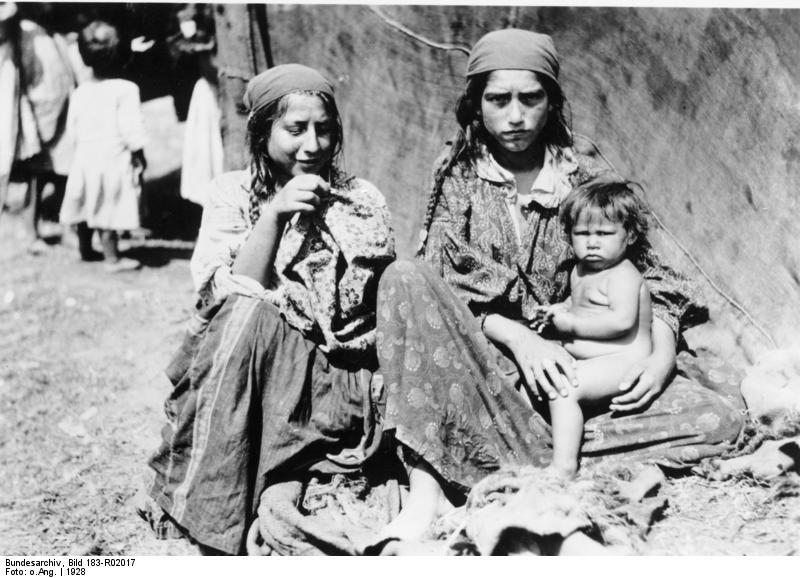

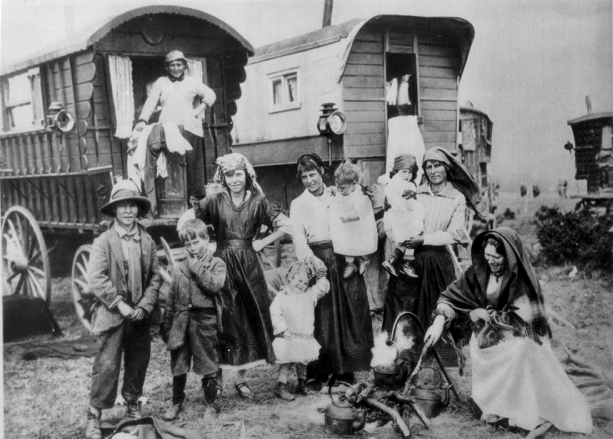
THE RISE OF ETHNO-RELIGIOUS NATIONALISM AND THE "DECLINE OF WESTERN CIVILISATION"
This blogpost deals with the question “What does contemporary antisemitism reveal about European citizenship and nationhood?” within the framework of rising ethno-religious nationalism in Europe. A nation can be understood from a civic-territorial model founded on a formal principle of equality of all citizens or an ethno-genealogical model based on an ethnic and historic common sense of belonging (Bracke & Hernández Aguilar, 2020; Sen, 2020). The rise of ethno-religious nationalism is an expression of Europeans reverting back to an ethno-genealogical model of nationhood in opposition to the equalizing logic of citizenship. Primordial ties of kinship and religion are thus used as the primary source of state legitimacy.
We can assume that the process of ethnicization of deviation from the ethno-Catholic model of Europe is at the source of both antisemitism and rising nationalism (See: Magical antisemitism and the Ethnicization of Ideological Deviance). It shows us that the construction of an exclusive ethnic nation is contingent on a symbolic category like Jewishness. Ethno-religious nationalists believe that “Jews” are contaminating the nation with their civic ideals and are building a dangerous post-national, cosmopolitan world (Zubrzycki, 2016).
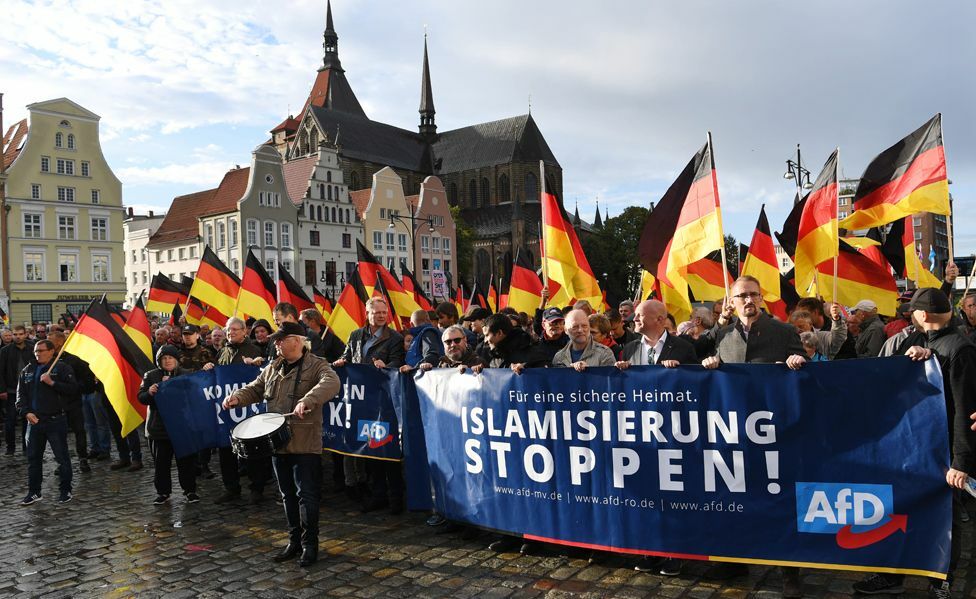
This idea of a contaminated or declining Western civilization is also a prominent feature of Islamophobic discussions on the “Muslim Question”. The Muslim Questions refers to conspiratorial use of demographics to support the claim of a combative strategy by Muslims to replace the white and Christian populations that are considered to be “native” to Europe and is very reminiscent of the 19th century “Jewish Question” (Bracke & Hernández Aguilar, 2020). However, we don’t want to explore the Jewish or Muslim Question on its own but rather the subject who keeps asking them. In deconstructing this biopolitical figure of “The Jew” or “The Muslim” we can turn the question around and interrogate Europe itself about its processes through which it constructs nationhood and unity (Anidjar, 2012).
Bearing all this in mind, it is unsurprising that the rise of ethno-religious nationalism and antisemitism in Europe, as well the discrimination of other minorities such as Roma and Muslims, have run parallel. If civil-legal claims of citizenship are recognized, the European nation is reduced to a mere territory. Thus, a racial conceptualization of the national population will always need an ethnized symbol of deviance to define its own boundaries.
Bearing all this in mind, it is unsurprising that the rise of ethno-religious nationalism and antisemitism in Europe, as well the discrimination of other minorities such as Roma and Muslims, have run parallel. If civil-legal claims of citizenship are recognized, the European nation is reduced to a mere territory. Thus, a racial conceptualization of the national population will always need an ethnized symbol of deviance to define its own boundaries.
SELF-HATRED AND SHAME: WHEN XENOPHOBES HIT THE TARGET
“This lack of depth also explains why the Jews are unable to produce any really great men and why Judaism, like Woman, is denied the highest degree of genius” – Otto Weininger (2005:285).
If the above-described notion of Jewish self-hatred is mainly associated with the historical context of the twentieth century, this politicized notion of self-hatred has its origins within the context of modern-day Israel. It has been argued that some Jews, either Israeli nationals or citizens of other countries, may radically dismiss and defame their Jewish identity because of strong dissent with Israel’s state policies. Remarkably, this criticism of Zionism may sometimes gradually evolve into hostility towards the entire Jewish community starting from the loathing of oneself. There are various representations of such politicized self-hatred which might be based on opposition to Israel’s policies towards Palestine, or even on opposition to the very existence of Israel as a state (Finlay 2005). The feeling of shame and guilt eventually results in spreading self-hatred as the extreme response to Israel’s political outrages.
A case study of Jewish self-hatred can be found in some groups of modern-day Israel. There has been intergenerational conflict In the Hasidic community regarding their public appearance in society. Some children feel outside pressure when they wear the traditional Hassidic outfit. Moreover, it may significantly hinder their capacity to integrate into wider society since they are often treated as outsiders by secular society. On the one hand, they have their parents who impose traditional dress and behavioural codes as the true emanation of their nature as communal beings. Whilst, on the other hand, they face wider secular society which others them based on their public outfit and religious rigorousness. Thus, some Hassidic youngsters being dressed archaically often feel quite uncomfortable alongside secular peers. As a result, those youngsters may begin to have issues with their identification and the feeling of shame might lead to radical denial of their ethical and religious identity. Subsequently, this radical denial might grow into self-hatred as they perceive the image of Hassidic Jewishness to be the main barrier to their personal self-realization.
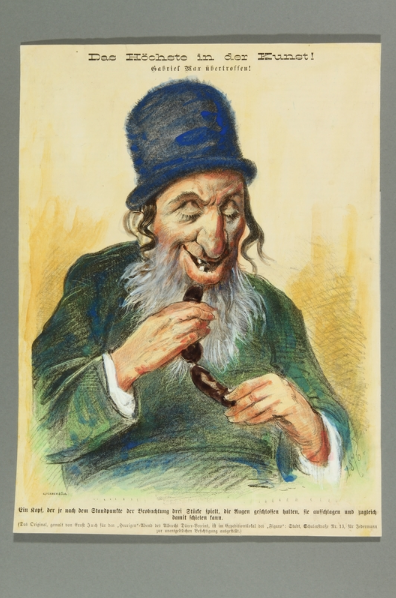
= You know what my biggest fear is? That I'll become him. That somehow his mannerisms will start rubbing off on me, and I'll become a stereotype. I mean, I'm a Jew and he's making me hate Jews.
- Dude, a self-hating Jew? You are becoming a stereotype.
[South Park 5(11)]
- Dude, a self-hating Jew? You are becoming a stereotype.
[South Park 5(11)]

It appears that certain ethnic or racial communities adopt a distorted, self-deprecating representation in response to systematic discrimination and social stigmatization. This may subsequently result in cultural cringe and an inferiority complex. In particular, Richard Alperin and Clement Greenberg point out that a lot of Jews having had traumatizing experiences of being denigrated opted not to combat the prejudices but to internalize an inferior self-image. Furthermore, some Jews began not only to deny their cultural and ethnical heritage but also actively denigrated everything which was slightly related to the notion of Jewishness. This bizarre phenomenon became widely known as “Jewish self-hatred”.
The term "Jewish self-hatred" came into being in the first part of twentieth-century in consequence to the works of two Jewish authors - Anton Kuh and Theodor Lessing. This term refers to the situation in which one tends to incite hate towards other Jews, especially those who happen to express their own Jewish identity more explicitly. Historically, the concept of Jewish self-hatred was founded on various premises such as the belief that Jews had innate intellectual and mental defects. In particular, some Jews truly believed, in line with certain pseudo-medical conceptions, that they were more prone to be mentally unstable than people of other ethnicities. (Gilman 1984) Remarkably, a lot of self-hating Jews like Otto Weininger or Karl Kraus perceived Jewishness to be the mark of social deviation because of the cultural and religious nature of Judaism.
The term "Jewish self-hatred" came into being in the first part of twentieth-century in consequence to the works of two Jewish authors - Anton Kuh and Theodor Lessing. This term refers to the situation in which one tends to incite hate towards other Jews, especially those who happen to express their own Jewish identity more explicitly. Historically, the concept of Jewish self-hatred was founded on various premises such as the belief that Jews had innate intellectual and mental defects. In particular, some Jews truly believed, in line with certain pseudo-medical conceptions, that they were more prone to be mentally unstable than people of other ethnicities. (Gilman 1984) Remarkably, a lot of self-hating Jews like Otto Weininger or Karl Kraus perceived Jewishness to be the mark of social deviation because of the cultural and religious nature of Judaism.
If you want to take a look how Jewish self-hatred is portrayed in popular culture, I recommend you watch the movie “The Believer” (2001, directed by Henry Bean and written by Bean and Mark Jacobson).

